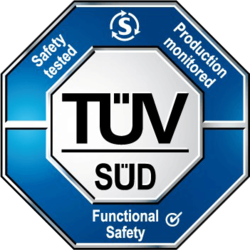Tool Qualification for Functional Safety Standards
(ISO 26262 / IEC 61508 / EN 50128)
Hardware development relies on numerous, advanced tools. Software tools may malfunction and generate erroneous output, which could lead to the production of hardware that may not function as required. For automotive, railway and other safety-critical applications, this risk must be assessed and adequately minimized. Functional safety standards define methods to evaluate confidence in the use of software tools, and demand countermeasures which depend on the target application. Understandably, when a tool is used to develop hardware for a vehicle braking system, demands are stricter than for when the hardware is for infotainment.
Tool qualification is a project-specific task. In recent years, vendors have started to provide safety certificates or packages, in an attempt to reduce tool qualification effort. Strategy may vary and so does the benefit to the user and project.
Read more about our ISO 26262 tool qualification effort on Semiconductor Engineering…
TUV Compliance White Paper: Shifting the Burden of Tool Safety Compliance from Users to Vendors

The security, safety, and performance of autonomous vehicles, railways, aerospace, nuclear power plants, and medical devices rely on electronic systems and their hardware components. Engineers use advanced software tools to develop complex hardware. Tools may malfunction, generate erroneous output, and ultimately introduce or fail to detect systematic hardware faults that could cause hazardous events in the field.
Functional safety standards demand that this risk be assessed and adequately minimized through tool qualification and other processes. For engineering teams, this is a time-consuming task and, worryingly, one for which there are no mature solutions yet. Tool vendors may provide safety certificates or packages, in an attempt to support their customers with safety compliance. Strategies vary and so do the benefits to the user and project.
In this paper, we review requirements on tool classification and qualification, present different safety compliance strategies, and explain their benefits to safety-critical hardware projects.
TUV SÜD Tool Compliance White Paper:
- Tool Safety Compliance
- IEC 61508 and EN 50128
- ISO 26262
- Achieving Tool Confidence
- Tool Chain
- Usage History
- Assessment of Development and Validation
- Development in Accordance to Standard
- OneSpin TUV SÜD Certification
- Conclusion
- Authors
- References and Further Reading
Download the tool safety compliance white paper (ISO 26262 / IEC 61508 / EN 50128)
Download the white paper to learn how safety certificates and packages can significantly reduce the tool qualification effort to meet functional safety standards like ISO 26262, IEC 61508, and EN 50128.

